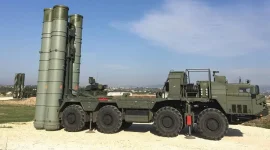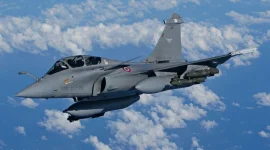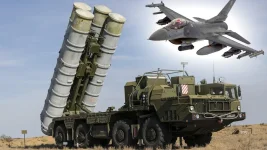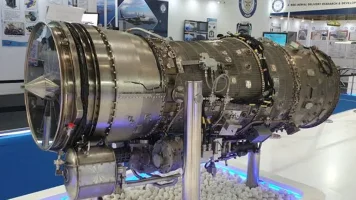- Views: 2K
- Replies: 15
In a major enhancement of its naval capabilities, India has formally approved Project-77, a strategic programme to design and build a new class of indigenous nuclear-powered attack submarines (SSNs).
The project, which received final clearance from the Cabinet Committee on Security (CCS) in October 2024, will introduce advanced underwater warfare technology, including a pioneering concept where the submarine will act as a mothership for large unmanned underwater vehicles (UUVs).
The initial phase of the project sanctions the construction of two SSNs, with a long-term plan for a fleet of six such submarines to be operational by the mid-2030s.
This initiative is seen as a critical step in modernising the Indian Navy and strengthening its underwater combat arm, addressing the growing complexity of the maritime security environment in the Indian Ocean Region (IOR).
Advanced Capabilities and Self-Reliance
The submarines developed under Project-77 are set to be formidable platforms, with a planned displacement of nearly 10,000 tonnes.Each vessel will be powered by a 190-megawatt pressurised light-water reactor developed domestically by the Bhabha Atomic Research Centre (BARC), enabling a top speed of over 30 knots (approximately 56 km/h).
The project, with a stated goal of 95% indigenous content and an initial budget of around ₹40,000 crore (approx. US$4.7 billion) for the first two units, is a significant milestone for India's Atmanirbhar Bharat (Self-Reliant India) policy in national defence.
These submarines will be equipped for a wide array of missions, including anti-submarine and anti-surface warfare, intelligence gathering, surveillance, and land-attack strike missions.
A New Era of Underwater Warfare
A defining feature of the Project-77 submarines will be their ability to operate in conjunction with unmanned systems.The submarine will function as a command-and-control "mothership," deploying and coordinating a team of large UUVs, such as the indigenously developed 20-ton JALKAPI-XLUUV.
This manned-unmanned teaming is similar to the "loyal wingman" concept used in modern air combat, where unmanned aircraft support a crewed fighter jet.
In this underwater application, the main submarine can remain in a secure, stealthy position while sending the UUVs forward to conduct high-risk tasks like surveillance in contested waters, mine detection, or engaging enemy vessels.
Strategic Response to Regional Challenges
The development of these advanced SSNs is a direct response to the shifting geopolitical landscape in the Indian Ocean.Concerns over China's expanding naval presence, including its growing submarine fleet and access to ports in nations like Pakistan and Sri Lanka, have made enhancing India's underwater defence a priority.
The Project-77 submarines, teamed with their unmanned counterparts, will provide a robust protective shield for India’s high-value naval assets, particularly its aircraft carrier battle groups centred around INS Vikramaditya and INS Vikrant.
Global Trends and India's Standing
By integrating manned-unmanned teaming, India joins a select group of nations at the forefront of naval technology.The United States Navy is actively developing its Orca Extra-Large Unmanned Undersea Vehicle (XLUUV), while China and Russia are also making significant investments in large autonomous underwater systems.
India’s commitment to this next-generation technology ensures it remains a competitive and capable power in the evolving domain of undersea warfare.
Timeline and Development
The first submarine under Project-77 is projected to be launched within 10 to 12 years, with its formal commissioning into the Indian Navy expected by 2036-2037.The complex project involves multiple agencies and locations, with design work led by the Navy’s Warship Design Bureau, hull fabrication by L&T, and final assembly at the Ship Building Centre in Visakhapatnam.
India's prior experience in building the Arihant-class nuclear-powered ballistic missile submarines (SSBNs) provides a valuable foundation of expertise for this ambitious new endeavour.





